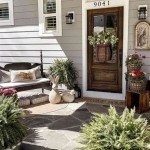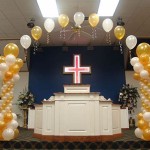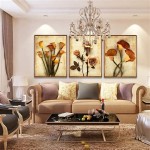Moroccan Themed Home Decor
Moroccan home decor offers a rich tapestry of textures, colors, and patterns, transporting inhabitants and guests to the exotic souks and vibrant landscapes of North Africa. This style embodies a unique blend of Berber, Arabic, and European influences, creating an atmosphere of warmth, opulence, and intricate artistry.
One of the defining characteristics of Moroccan decor is its emphasis on intricate patterns. Geometric designs, arabesques, and floral motifs are prevalent, often incorporated through tilework, textiles, and carved wood. These patterns, often featuring vibrant colors, create a sense of movement and visual interest within a space. The use of zellij, a traditional Moroccan mosaic tilework, is a hallmark of this style. Zellij often adorns floors, walls, fountains, and tabletops, adding an element of handcrafted luxury.
Color plays a crucial role in establishing a Moroccan aesthetic. Rich, warm hues like terracotta, ochre, and burnt orange evoke the desert landscape, while deep blues and greens reminiscent of the Mediterranean Sea add a contrasting element. These colors are often combined with metallic accents, such as gold, silver, and brass, to heighten the sense of opulence and create a warm, inviting atmosphere. Jewel tones like emerald, sapphire, and ruby can also be incorporated through textiles and decorative objects, adding depth and vibrancy to the space.
Textiles are essential to creating a truly Moroccan feel. Intricately woven rugs, plush cushions, and flowing drapes add texture, warmth, and comfort to the space. Traditional Moroccan rugs are often made of wool or silk and feature intricate Berber designs. These rugs not only serve as floor coverings but also as wall hangings and decorative throws. Embroidered cushions and poufs, covered in vibrant fabrics like velvet and silk, offer comfortable seating and further enhance the opulent atmosphere.
Furniture in a Moroccan-themed space typically features carved wood, intricate metalwork, and inlaid bone or mother-of-pearl. Low seating arrangements, such as floor cushions and poufs, encourage a relaxed and convivial atmosphere. Traditional Moroccan tables are often low and round, made of carved wood or intricately patterned metal. These tables are ideal for serving tea and traditional Moroccan meals. Ornate chests and armoires can also be incorporated to provide storage and add to the overall aesthetic.
Lighting is another key element of Moroccan decor. Ornate lanterns, made of metal and colored glass, cast intricate patterns of light and shadow, creating a magical ambiance. These lanterns can be hung from the ceiling, placed on tables, or used to illuminate walkways and outdoor spaces. Wrought iron chandeliers and sconces further contribute to the overall sense of opulence and artistry.
Architectural features can also contribute to the Moroccan theme. Arched doorways and windows, reminiscent of traditional Moroccan architecture, can be incorporated into the design. Niches and alcoves can be used to display decorative objects and create visual interest. The use of stucco walls, often textured or patterned, further enhances the authentic Moroccan feel.
Accessorizing the space with traditional Moroccan objects adds the finishing touch. Tagines, intricately decorated ceramic cooking pots, can be displayed as decorative pieces. Brass trays, inlaid with intricate patterns, can be used to serve drinks or display decorative objects. Hand-painted ceramics and pottery, featuring traditional Moroccan designs, add a touch of artistry and craftsmanship to the space.
Creating a Moroccan-themed space involves careful consideration of various elements, from the overall color palette to the intricate details of individual decorative objects. The goal is to create a cohesive and harmonious environment that evokes the rich cultural heritage and artistic traditions of Morocco. By incorporating the key elements of pattern, color, textiles, furniture, lighting, and architectural details, one can transform any space into a haven of exotic beauty and tranquility.
Maintaining a balance between authenticity and personal preference is crucial when designing a Moroccan-themed space. While adhering to the traditional elements ensures a genuine representation of the style, incorporating personal touches allows for individual expression and creates a space that truly reflects the inhabitant's unique style. The aim is to capture the essence of Moroccan design while adapting it to suit modern living and individual tastes.
Whether one chooses to embrace a full-fledged Moroccan theme or incorporate subtle elements into an existing design scheme, the result is a space that exudes warmth, character, and a touch of exotic charm. From the vibrant colors and intricate patterns to the luxurious textiles and ornate furnishings, Moroccan decor offers a unique and captivating aesthetic that transforms any home into a sanctuary of beauty and tranquility.

Moroccan Interior Design Ideas For Your Home Designcafe
:max_bytes(150000):strip_icc()/4-tips-for-buying-the-perfect-moroccan-rug_1000x-8e7612ad47c544cdaab48d9cc6d2dd3d.jpeg?strip=all)
11 Moroccan Inspired Decor Ideas

10 Best Moroccan Decor Design Ideas In 2025 Inspired

Moroccan Interior Design Ideas For Your Home Designcafe

Moroccan Style Interior Design

Bring A Touch Of Morocco To Your Home With These Interior Designs

Moroccan Interior Design Ideas For Your Home Designcafe


Worldwiide Decor Moroccan Style Basics

Moroccan Decor Ideas For Home







